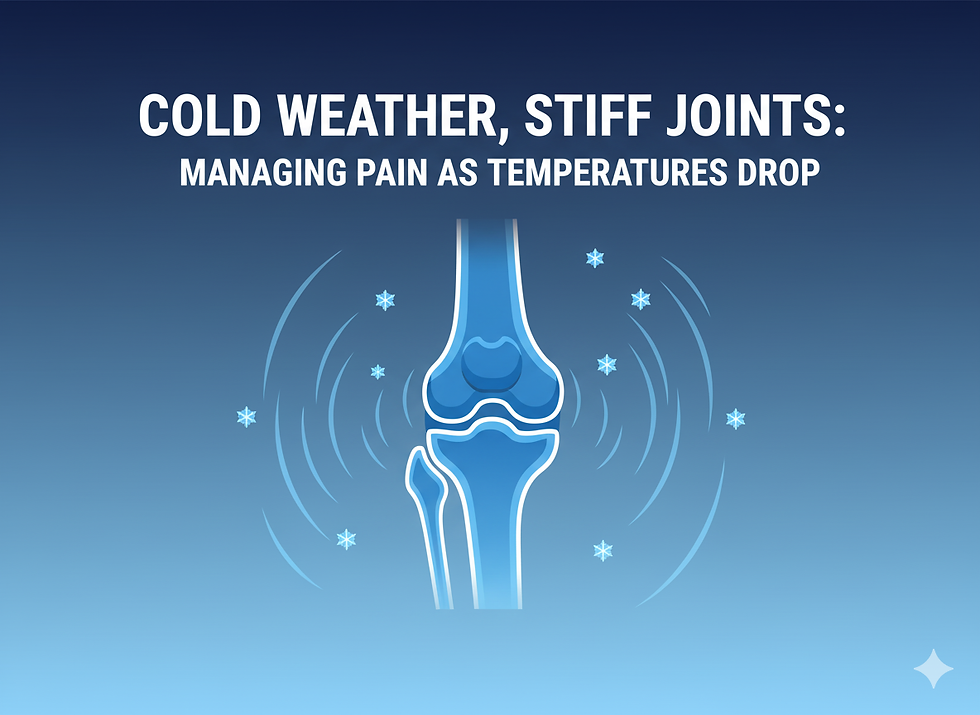Shovelling Snow: Tips & Tricks for Everyone’s Favourite Winter Exercise
- K-Town Physio

- Jan 14, 2021
- 3 min read
Updated: May 18, 2021

It’s that time of year in Canada when the snow starts to fly and we can all get outside to ski, skate, snowshoe and toboggan. However, it’s also that time of year when we have to pull out the snow shovel…
The first few activities are good exercise along with a ton of fun, and while shovelling may not be as leisurely, it is still a workout nonetheless. Did you know that you burn approximately 300 calories while shovelling snow? As with any vigorous exercise, it’s important to warm-up. The exercises listed below will help keep you limber and ready to go!
Here are 5 exercises you should do before you head out to shovel your driveway this winter:
1) Squats

“Lift with your legs, not with your back.” This movement will help you gain strength in your legs that will help with this. Stand with your feet hip-width apart and keep most of your weight in your heels. Squat down as far as you can go while keeping your upper body as upright as possible. Make sure you keep your abdominals engaged (see our last blog!) throughout this exercise.
2) High Knees

This will get your legs warmed up and ready for movement. Just march in place, bringing your knees as high as you can.
3) Arm Circles

Shovelling is a strain on your arms and shoulders - this exercise will help you strengthen your arms to lift and throw that heavy snow. Hold your arms out to the side and rotate them forward & backward in small circles.
4) Cat & Cow


Get down on your hands and knees. Round your back up like a cat and hold, then arch your back and hold.
5) Trunk Rotation

A strong core (as described in our last blog) will help with your shovelling. Warm-up your core by rotating your torso from the left to the right. This should be a controlled motion - don’t let your arms flop around and don’t use momentum to swing your body in one direction and then the other.
Exercise photos courtesy of Physiotec.
The risk of injury while shovelling snow is high. Clearing the driveway can actually be dangerous if not performed carefully - moving a heavy shovel full of snow repeatedly can put you at risk of injury if you’re not safe. More specifically, it increases the risk for low-back and shoulder injury because of the weight and imbalance of the snow itself coupled with poor postures involved and the repetition of the task.
When shovelling snow, the challenge of the movement is taken on primarily by muscles and joints at the back of the body, it’s really a combination of an aerobic activity combined with resistance training. Here's the right way to dig out after a snowstorm—and even build muscle in the process:
Keep your knees slightly bent at all times
Hinge at the hips, keeping your low back in a neutral position
Engage your core (also from our last blog!) while pushing and lifting the shovel
Maintain a “wide” grip on the shovel, top hand on the handle, bottom hand close to the shovel especially when lifting the snow
Keep the shovel close to your body and at waist level throughout the movements
Don’t “twist and throw” the snow, turn your entire body with the lifted snow and if possible turn the shovel to “drop” the snow
If possible, don’t even lift the snow, just plow it to the sides
Take breaks as needed (as with any activity), when fatigue sets in this is when injuries tend to occur
When performed with good posture, proper technique (and with frequent breaks if required!), the snow shovelling that’s necessary can count as your 45 minutes of daily activity. Hopefully these exercises and quick tips will help you avoid any injury during this classic Canadian activity.
If you do experience any discomfort from shovelling or want some further guidance on some exercises described, come in and see one of our therapists who can help find the root cause of your pain and get you started on the path to pain-free shovelling.
Written by: Scott Fraser – Registered Physiotherapist
Video/Exercises courtesy of Physiotec



